11 Unusual Interests Of John Kellogg That Went Beyond Breakfast Cereal
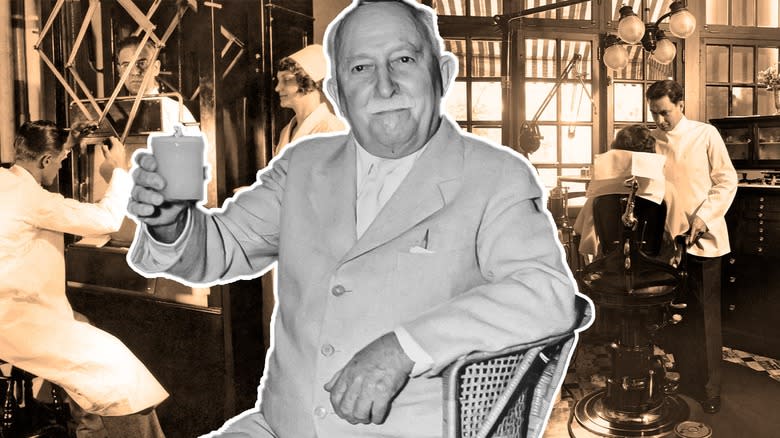
Let's be honest here: Corn Flakes are really boring. Making them into a breakfast that you actually want to eat takes a little creativity, like adding some fruits or nuts, a drizzle of syrup, or so much sugar that it kind of negates the entire point of eating Corn Flakes in the first place. As boring as they might be, the story behind them and their creator John Kellogg is anything but.
Corn Flakes were designed to be boring, and it's only more recently that cereal became sugary. It's no secret that sweet cereals can sabotage attempts at healthy eating in a big way, and that's the opposite of what Kellogg had in mind when he kicked off his breakfast cereal empire. To call Kellogg a health-obsessed fanatic that even TikTok would get tired of today isn't an exaggeration, and his life story reads like something that's been wildly exaggerated in order to make an entertaining Netflix series. But here's the thing: There's nothing about Kellogg that requires exaggeration, because it's all extreme stuff that comes with a dose of the weird, a sprinkling of racism, and a heavy dollop of pseudoscience quackery with a nonsense cherry on top.
Born in 1852, Kellogg was at the forefront of a movement to overhaul and improve the health of all Americans. The problem was, no one really knew quite how to do that. Did that stop Kellogg? Of course not.
Read more: US Foods You Surprisingly Can't Find In Canada
He Was A Devout Seventh-Day Adventist, But The Church Excommunicated Him
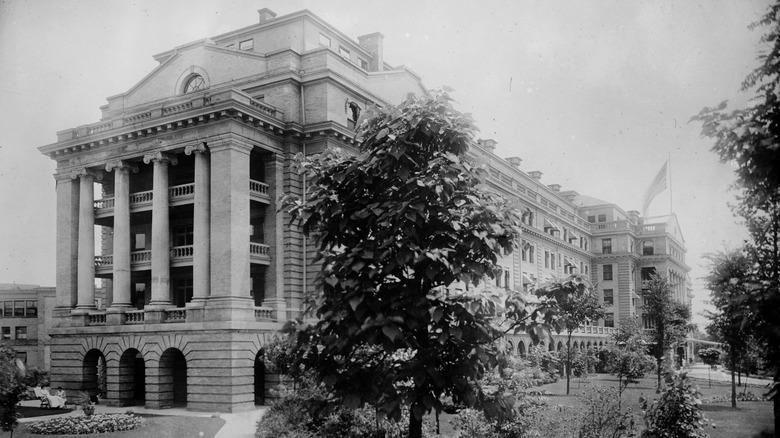
In order to understand where John Harvey Kellogg was going with some of the things that he taught both at his Battle Creek Sanitarium and in literature that was distributed across the country, some background is necessary. Kellogg was born and raised within the Seventh-day Adventist Church, which is big on cleanliness, spiritual and physical purity, and holy living that will lead to a literal resurrection. Kellogg — like others in the congregation — was a vegetarian who avoided things like coffee and alcohol, and he was so devout that the church essentially sponsored his education.
After going to medical school, he was put in charge of the Seventh-day Adventist Western Health Reform Institute in Battle Creek, Michigan (later renamed the Battle Creek Sanitarium) in 1876. It was part hotel, part retreat, and all medical spa, but it was more than that — it was also at the forefront of a lifestyle brand that Kellogg called "biologic living."
Today, Kellogg's philosophy might be categorized as "wellness." It's disease and illness prevention through exercise and proper diet, but there wouldn't be a story there if that's all it was. Kellogg's methods were extreme, and they were a huge deal: He was even nominated for a Nobel prize in 1921, years after his connection with the church had dissolved. Why was he expelled? The sanitarium became so profitable that the powers that be started to think he'd gone over to the side of the devil, and he was excommunicated.
His World-Famous Sanitarium Was Visited By Everyone From Actors To Presidents
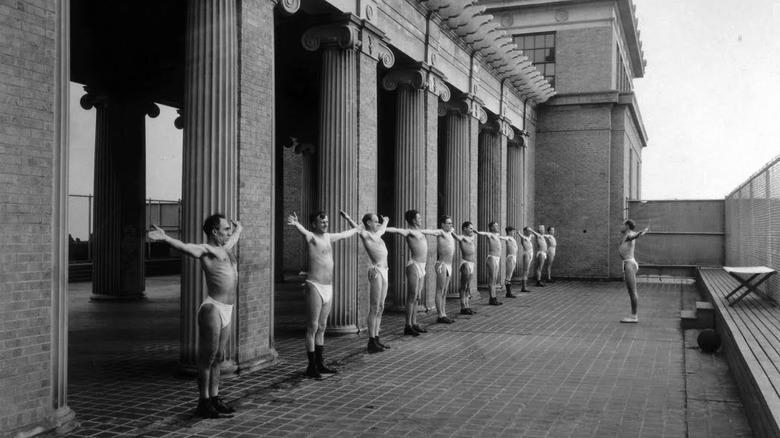
Although the Battle Creek Sanitarium was founded by James and Ellen White, once Kellogg stepped in, he never looked back. The fact that he was always on-site and very hands-on was a point of pride for him; he kept up with all the latest research into diet and nutrition and he personally met with, examined, and prescribed a treatment plan to each person who stayed at the sanitarium.
Kellogg was, by all accounts, more than just interested in the well-being of his patients. He believed that God wanted him to bring health and wellness to the world through a variety of different avenues.
The scale of the Battle Creek Sanitarium was almost unimaginable. It boasted 1,200 rooms and had not only all the latest medical equipment, but also a massive park, theater, lecture hall, ballrooms, and facilities for everything from regular sporting events to dances. The patient list of those who went there to be treated was a who's-who of the era. It included presidents like Warren Harding, Calvin Coolidge, Howard Taft, Herbert Hoover, and the Roosevelts; members of the nation's richest families like the Rockefellers, the Fords, and the Firestones; and entertainers, inventors, and pretty much anyone of the era who has their name in a history book.
He Was A Staunch Proponent Of Light Therapy And Light Baths
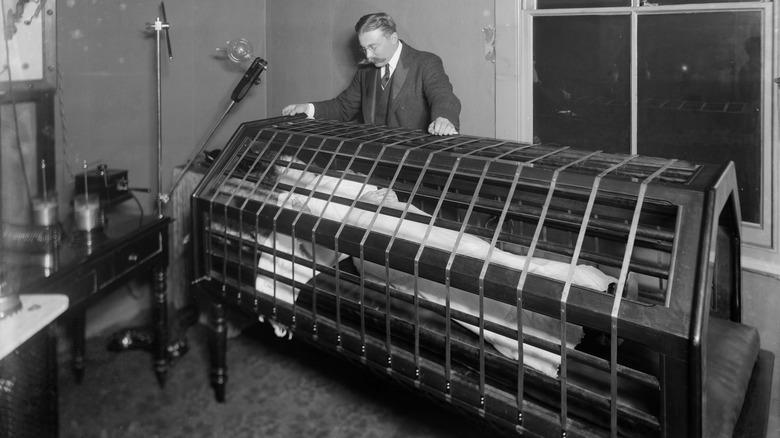
John Harvey Kellogg had a lot of opinions on how to best live a healthy life, and some of them still hold up today. He believed in the importance of cleanliness, exercise, and getting outdoors and breathing fresh, clean air. But he also firmly believed in ideas like light therapy, the theory that you could cure almost any ailment with a bright enough light.
While it's worth mentioning that light therapy is a completely legitimate treatment for some conditions, Kellogg took the idea and ran with it ... and then kept running, and running, and running some more. One of the things that he invented and installed in the Battle Creek sanitarium was the electric light bath (like the one pictured), which he claimed could cure things like diabetes, obesity, constipation, high blood pressure, kidney disease, and arteriosclerosis.
Kellogg described the electric light bath as a cabinet that was lined with mirrors and outfitted with 48 light bulbs that could be turned on and off independently, depending on the sort of treatment that was prescribed. The popularity of the treatment went far beyond the borders of Battle Creek, and after being featured at the 1893 Chicago World Exposition, it caught on in a big way in Germany (Incidentally, part of the reason he wore white suits was so that he could take full advantage of the light while remaining completely clothed).
He Was A Big Believer In Hydrotherapy
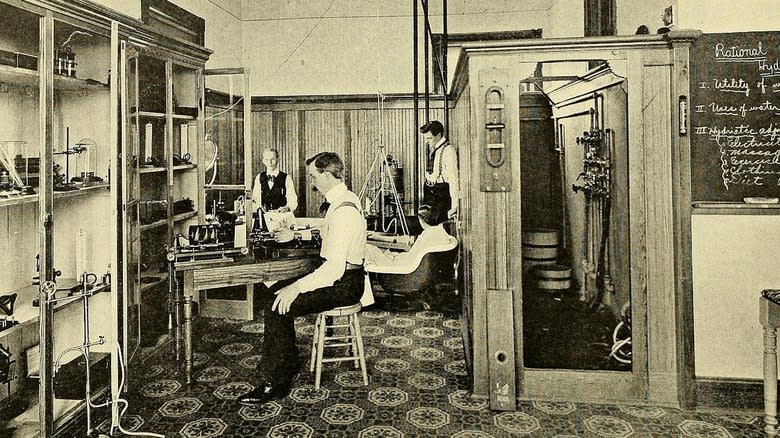
John Harvey Kellogg wrote a book called "Rational Hydrotherapy," and in it, he describes not only the long history of hydrotherapy, but also gets into the applications of cold and hot baths and the benefits of using this therapy for things like increasing circulation, relaxing muscles, changing the sensitivity of the skin. He also described treating conditions like arthritis, anemia, and something he called "cerebral congestion."
Interestingly, his interest in hydrotherapy didn't start with him. Ellen G. White is widely considered to be one of the founders of the Seventh-day Adventists, and believers interpreted her many writings to be messages from God. White's first book was published in 1851, and in 1855, she set up shop in Battle Creek after she claimed God had appeared to her, given her directions on hydrotherapy practices, and told her to open a retreat.
Kellogg got involved in the practice rather quickly, but when White claimed her visions from God weren't precisely what Kellogg was doing, the perhaps inevitable falling-out happened. Kellogg, meanwhile, continued to promote the 46 different types of baths offered at the so-called San, including a "continuous bath." That was pretty much like a regular bath, but instead of an hour-long soak, patients could be confined to the tub "for many hours, days, weeks, or months, as the case may require" (via History).
He Was One Of The Leaders Of The Eugenics Movement

John Harvey Kellogg was devoted to making the world a healthier, happier place, and that's great. What's not-so-great is that he believed that could be done not only through diet and exercise, but also forced sterilization, selective breeding, and what other supporters of the eugenics movement called "race betterment." He even wrote a paper on the topic that encouraged all Americans to get on board the eugenics wagon: The paper was called "Needed — A New Human Race," and it promoted the idea that if you had good genes (and were white), you needed to have a ton of kids so that America remained white.
Does it get worse? Unfortunately, yes. He was also one of the major organizers of the First National Conference on Race Betterment, which he hosted at his Battle Creek Sanitarium in 1913. The conference's keynote speaker advocated for 15 million forced sterilizations in the U.S. After passing sterilization laws in 1923, Michigan performed nearly 3,800 of them.
Kellogg spent about three decades of his life promoting eugenics, explaining his motivations at the Battle Creek conference (via the Battle Creek Enquirer): "If the human race is degenerating, we should know about it. We should let the people know and we should see what ought to be done about it." The conference also included Better Babies contests — in which babies were measured and judged on physical attributes — and around 50 speeches on racial purity that would go on to help inspire Nazi policy.
He Was Obsessed With The Health Benefits Of Enemas And Regular Bowel Movements
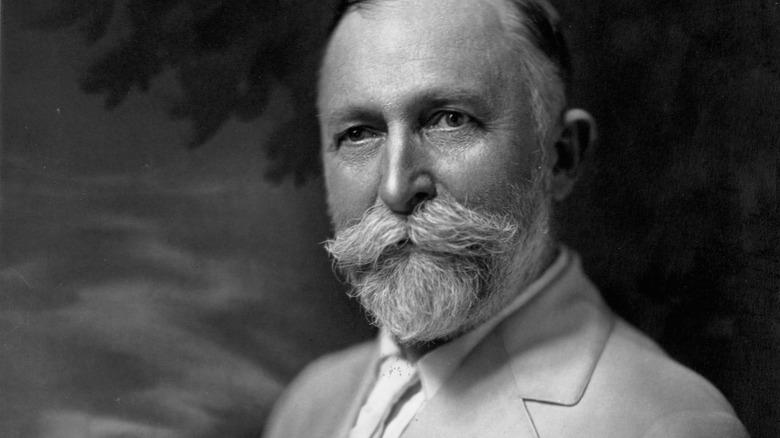
While regular bowel movements are undoubtedly one key to good health, John Harvey Kellogg's fixation went above and beyond. Kellogg, the story goes, was on a safari when he observed apes in the wild having at least four bowel movements a day. He decided that this was exactly what was good, healthy, and acceptable for people to have as well, and it led to the establishment of the Battle Creek Sanitarium enema room.
Kellogg once wrote (via History), "More people need washing out than any other remedy," and it's safe to say that he was very serious about that. The sanitarium had machines that could cycle 15 quarts of water through a person's nether regions every 60 seconds, and if that wasn't enough to satisfactorily clean out a person, then he would prescribe quarts of yogurt to be eaten and, well, inserted.
Why the fixation? Kellogg subscribed to a theory that was popular at the time called autointoxication. The idea was that if you ate food that stayed in your system, it would start to rot inside you. The first step to good health was flushing out all those toxins ... quite literally. He practiced what he preached, too: One of the jobs he assigned his younger brother — and Corn Flakes co-creator — Will Kellogg was to thoroughly document his bowel movements.
He Was Dedicated To Promoting A Lifetime Of Abstinence And Avoidance Of The Solitary Vice
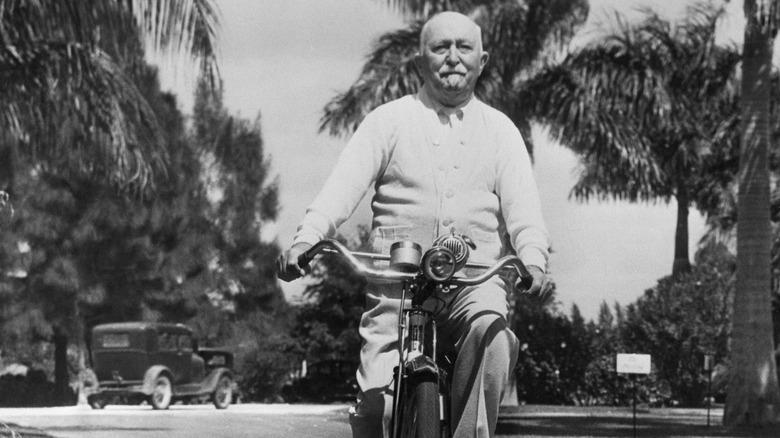
In 1881, John Harvey Kellogg wrote "Plain Facts for Young and Old," and in it, he made it quite clear that not only was he wildly offended by the idea that sex for anything other than baby-making existed, but by something else too: "If illicit commerce of the sexes is a heinous sin," he wrote, "self-pollution, or masturbation, is a crime doubly abominable. As a sin against nature, it has no parallel except in sodomy. It is the most dangerous of all sexual abuses, because the [sic] most extensively practiced."
He went on to detail some of the signs that someone was falling victim to the so-called solitary vice, including emaciation, weakness, sleeplessness, "failure of mental capacity," "premature and defective development," untrustworthiness, paralysis of the lower body, the development of a shuffling walk, a tendency to eat clay and pencils, acne, and a "fondness for obscene stories."
According to Kellogg, people who were partaking in the solitary vice too often would face serious mental and physical health issues. "That solitary vice is one of the most common causes of insanity, is a fact too well established to need demonstration here." He added other consequences, including "a profound melancholy," heart disease, chronic indigestion, epilepsy, and in women, he claimed it was the cause of cancer, uterine disease, sterility, and the oh-so-vague hysteria.
Cleanliness? For Kellogg, It Was Somewhere Between Godliness And Obsession
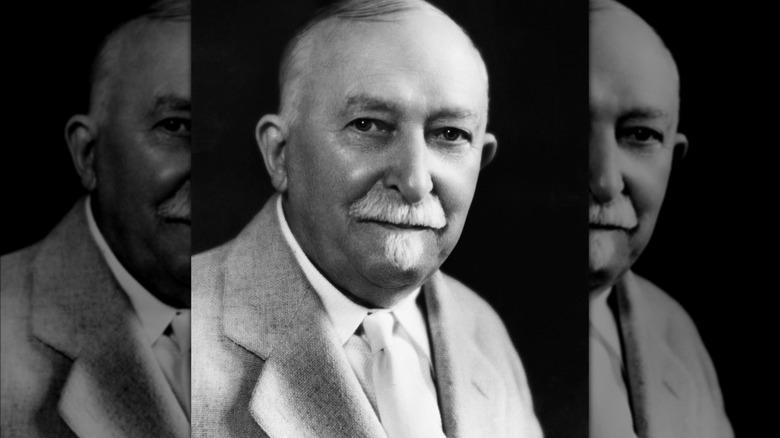
John Harvey Kellogg always wrote white, and there's a few different reasons given for that. Dr. Howard Markel is the author of "The Kelloggs: The Battling Brothers of Battle Creek." In a conversation with NPR, he explained, "He always wore white suits, by the way, so that you could see dirt very instantly and you could change."
In a piece for PBS, Markel described the Battle Creek Sanitarium as being "hygienically perfect" as well. Kellogg oversaw an army of staff and went a long, long way to make sure that pure cleanliness was possible. The complex included a whopping five acres of easy-to-clean marble flooring, and that's even more impressive than it sounds. It's hard to visualize, so for some comparison, that's the equivalent of about four football fields or 45 basketball courts.
Kellogg also distributed a magazine called Good Health, and in the June 1903 issue, he wrote a bit on the subject of how bathing had multiple benefits. Specifically, he recommended a morning bath for what he called "skin gymnastics." He explained that shocking the skin with ice-cold water caused the blood vessels to dilate: "The cold morning bath ... is not simply cleansing or polishing the outside of the body temple, but ... all the temple furniture and of every inner apartment."
He Promoted Vegetarianism By Creating New Foods And Raising A Vegetarian Wolf

While George Washington Carver might be credited with popularizing peanuts in the U.S., it was John Harvey Kellogg who patented the process for creating peanut butter. Kellogg was a huge proponent of a vegetarian diet, creating and patenting a number of foods that he designed to help make it easier for people to transition away from meat.
Kellogg may have accidentally invented Corn Flakes, but he worked on other projects for a long time. Among those was one of the first attempts at making a meat substitute. It was made from peanuts and called Nuttose, and Kellogg described it as the "perfect substitute for flesh food" (via Mother Jones). Then, he followed it up with another product called Protose. Kellogg was also the mastermind behind granola. He had a unique way of promoting his meat-free diet: By raising and exhibiting a vegetarian wolf.
In an interview with the BBC, Dr. Howard Markel explained that the wolf was kept as a pet, fed only vegetables, and was allowed to play with Kellogg's 40-odd adopted children. For exhibitions, Kellogg would demonstrate that when the wolf was given meat, it would become aggressive: "He even wrote that all of the wars of mankind could have been prevented if we all ate a vegetarian diet."
He Debunked Pseudosciences Like Animal Magnetism And Phrenology

John Harvey Kellogg may have believed in some wacky stuff, but he also wrote extensively to debunk some of the theories that he saw as absolute, well, bunk. In 1896, he wrote "The Home Hand-book of Domestic Hygiene and Rational Medicine," and it's that last part that's really interesting. Kellogg took on a few things that had caught some serious traction at the time, including the so-called "animal magnetism" and phrenology, which was the dubious science of studying the bumps and contours of a person's skull. There is, of course, nothing to either of those things, and Kellogg made it very clear that he wasn't buying any of it.
He wrote that animal magnetism was the domain of the charlatan: "There is no evidence that any person possesses such magnetic power. [However], Individuals often possess wonderful powers of influence," and volunteered a similar opinion of phrenology. The problem? Not that it wasn't real, per se, but that "The amount of trash which has been retailed about the country, especially in the rural districts, under the name of phrenology, is appalling ... Bad advice given by such an individual may do an incalculable amount of harm."
He Performed Regular Surgeries, Including Removing Sections Of Intestines And Genital Mutilation

Perhaps most surprising of all, John Harvey Kellogg wasn't just a nutritionist and proponent of clean living — he was also a surgeon. When treatment at the Battle Creek Sanitarium didn't cure what ailed a person, it was onto the table and under the knife. And it happened a lot: Kellogg performed an estimated 22,000 surgical procedures over the course of his lifetime, and while there's not much available information on how many people considered themselves cured, we do know that he was pretty successful as far as avoiding complications went. Most of the procedures were to remove a part of a patient's intestine, and that's standard enough stuff. That's not all he did, though, and this is going to get dark.
Kellogg was also more than happy to consult with parents who were concerned that their teenage children were masturbating too often. Kellogg's abusive solutions included administering carbolic acid to the genital area to cause painful burning, or other surgical procedures that were done without anesthetic. Why? The theory was that pain would discourage the behavior. Good luck thinking about anything else while pouring your next bowl of Corn Flakes.
Read the original article on Mashed


